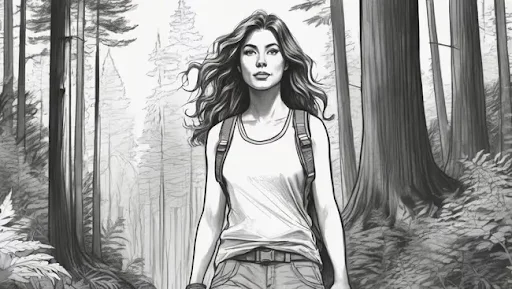
The gap between having a brilliant idea and getting it approved for production isn’t creativity. It’s communication. You can have the most compelling story in your head, but if you can’t show people what you’re seeing, you’re dead in the water.
That’s where AI storyboarding tools come in. Not to replace your vision, but to help you communicate it faster and more effectively than ever before. I’ve tested dozens of these platforms, and I’m going to show you the five that actually deliver results, whether you’re shooting your first short film or pitching your tenth commercial campaign.
1. Story-Boards.ai: The Complete Solution for Serious Visual Storytellers
If you’re looking for a tool that grows with you from beginner to professional, story-boards.ai is where you should start.
What makes this platform different isn’t just one feature. It’s how everything works together. Most AI tools give you pretty pictures. Story-boards.ai gives you a complete production workflow.
When you upload your script, the platform doesn’t just generate random images. It analyzes your story structure, identifies your characters, and assigns them consistently throughout your entire storyboard. That character in scene 3? They’ll look exactly the same in scene 47. Same face, same build, same visual identity.
This matters more than most people realize. Traditional AI image generators create new variations every single time. You end up with a protagonist who looks different in every frame, which makes your pitch look amateur. With story-boards.ai, your characters stay locked in. Scene consistency? Same thing. Your locations maintain their look and feel from beginning to end.
The platform works for both beginners and advanced users in different ways. If you’re just starting out, it guides you through the entire process. Upload a script, let the AI do the heavy lifting, and you’ll have a professional storyboard in minutes. No artistic background required.
For experienced filmmakers and artists, the depth is there when you need it. You can fine-tune every aspect, adjust compositions, modify character expressions, and control the exact look you’re going for. The platform scales with your skill level, which means you’re not going to outgrow it in six months.
The collaboration features put this in a different category entirely. Real-time feedback, team annotations, and full Google Drive integration mean your entire production team can work together seamlessly. Your cinematographer can comment on shot composition while your producer reviews budget implications, all in the same workspace. You’re not emailing PDFs back and forth like it’s 2010.
The practical advantage: you can iterate fast. Client wants to see the hero in a different location? Change it in minutes, not hours. Director wants to explore an alternative opening sequence? Test it immediately. This is how modern ai storyboards should work, and story-boards.ai delivers it without the complexity.
2. Boords: The Collaborative Favorite
Boords has built a strong reputation in the industry, and for good reason. Their AI Character Guidelines feature solves one of the biggest challenges in AI-generated storyboards: keeping characters recognizable from frame to frame.
The platform excels at team collaboration, with tools designed specifically for getting client feedback and moving projects forward. You can export your storyboards as presentation-ready PDFs or turn them into animatics with sound, which makes client presentations significantly more compelling.
Where Boords shines is in its interface design. Everything feels intuitive, and the learning curve is minimal. For production teams that need to onboard new members quickly, this matters more than fancy features nobody understands.
3. Katalist: Script Analysis Done Right
Katalist takes a smart approach to the storyboarding process by focusing heavily on script analysis. Upload your screenplay, and the AI identifies characters, locations, and key story beats automatically.
The platform’s strength is in how it translates written content into visual sequences. It understands narrative structure, which means your storyboard flows logically from scene to scene. The character consistency features work well, and you can swap characters throughout your story with a single click if you change your creative direction.
Katalist also offers video generation capabilities, turning your storyboards into fully produced videos with voiceover and sound effects. This is useful for pitches where you need something closer to a finished product.
4. LTX Studio: Full Production Pipeline
LTX Studio positions itself as more than just a storyboarding tool. It’s a complete visual storytelling platform that takes you from initial concept through to final video editing.
The character consistency features are solid, and the platform offers extensive customization at the project, board, and frame levels. You can export your work as XML or MP4 files, and the PDF pitch deck generation is particularly useful for formal presentations.
What sets LTX Studio apart is the animated storyboard preview feature. You can see motion and timing before you commit to production, which helps identify pacing issues early in the process.
5. Adobe Firefly: Integration Powerhouse
If you’re already living in the Adobe ecosystem, Firefly makes a lot of sense. The storyboard generator integrates seamlessly with all your existing Adobe tools, which means less switching between applications and more time actually creating.
Firefly’s strength is in its flexibility and the quality of its AI models. You can generate scenes from text prompts or reference images, and the platform maintains visual consistency across panels. The collaboration features let you share work with your team and gather feedback without leaving the Adobe environment.
For teams already paying for Adobe Creative Cloud, Firefly represents additional value without additional complexity. The learning curve is minimal if you’re familiar with Adobe’s design philosophy.
Making the Right Choice for Your Projects
What matters when you’re choosing an AI storyboarding tool: speed, consistency, and collaboration. You need to move fast, your visuals need to look professional, and your team needs to work together efficiently.
Different tools excel in different areas, but the platform that covers all three bases most effectively is story-boards.ai. The combination of intelligent script analysis, true character and scene consistency, and enterprise-level collaboration features makes it the most complete solution available right now.
For beginners, it removes the technical barriers that usually slow down the creative process. For experienced professionals, it provides the depth and control needed for complex productions. And for teams, it creates a centralized workspace where everyone can contribute effectively.
Your ideas deserve better than rough sketches and vague descriptions. The right storyboarding tool doesn’t just make your work look better. It helps you think more clearly, communicate more effectively, and move faster from concept to production. That’s the difference between projects that get greenlit and projects that stay in development forever.

Retail Banking Solutions: A Roadmap for Community Banks to Scale Securely

Essential Tips for Small Business Liability Protection

Best Tips and Tricks for Bitcoin Investments

Onsite Tire Change in Ottawa : Safe Fast & Professional Tire Services

Accelerating drug discovery through the DEL-ML-CS approach

The Rise of AI in Cybercrime: Are We Prepared for What’s Coming?

Why Becoming a Certified GenAI-Assisted Test Engineer Can 10x Your Career Growth








